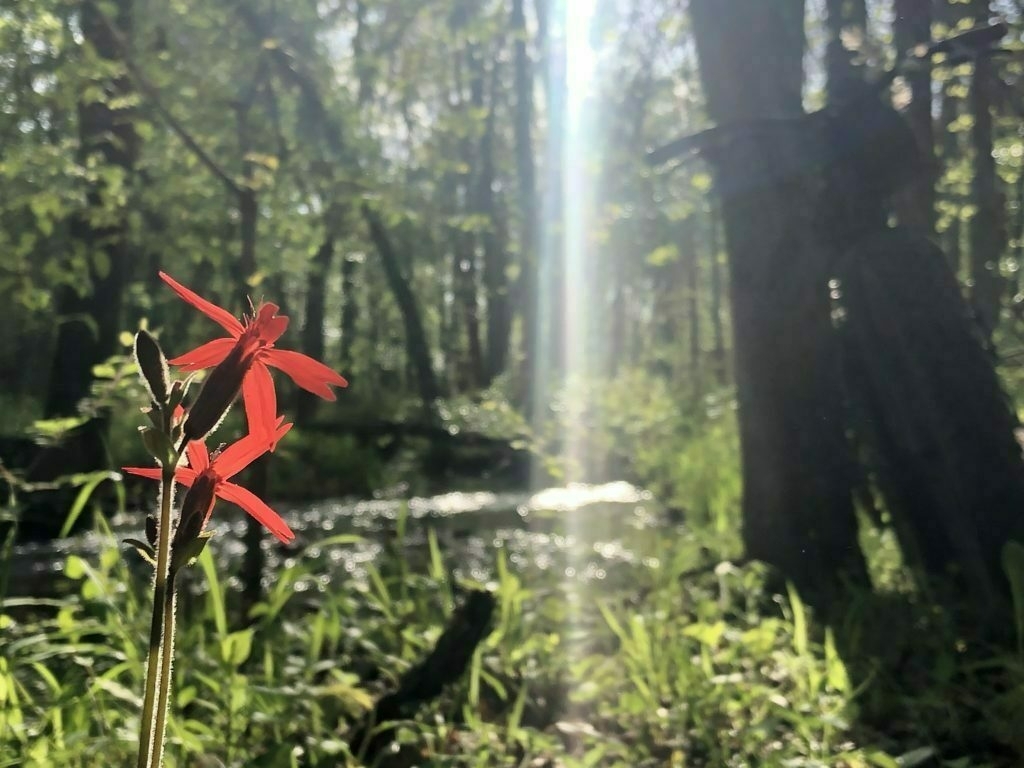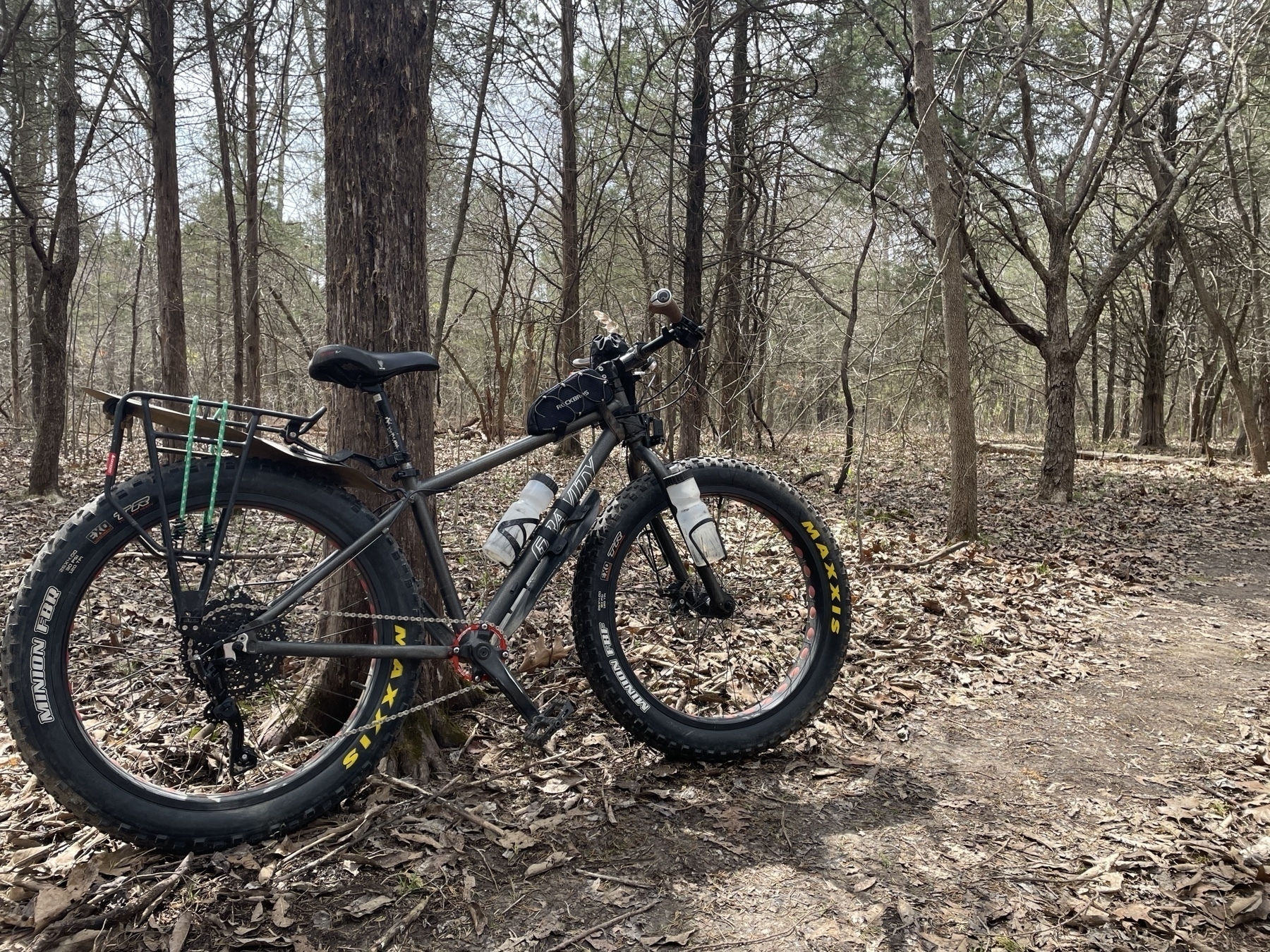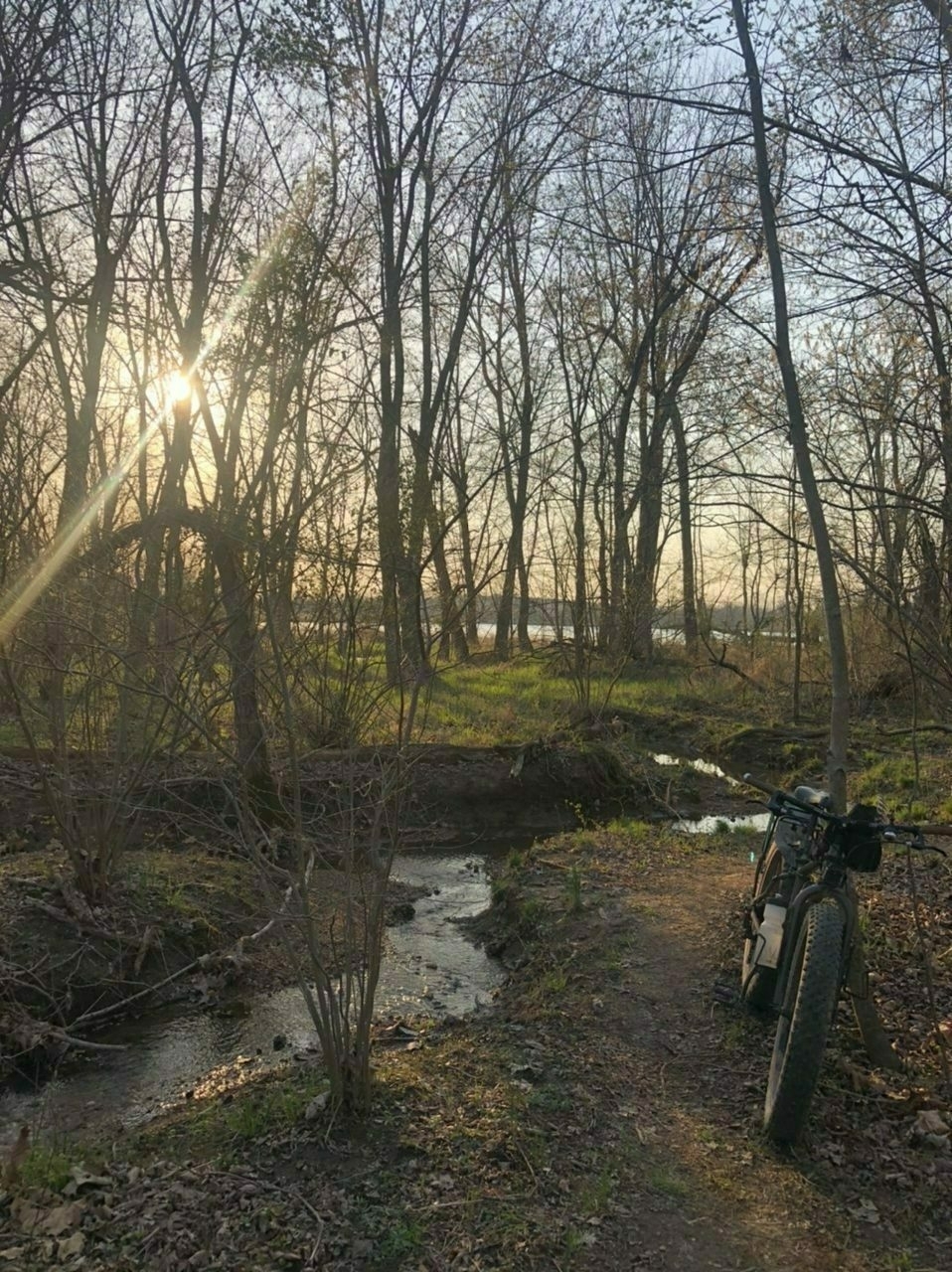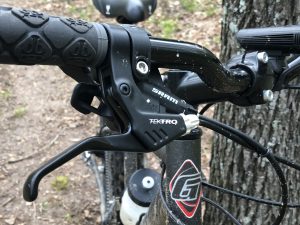My fat bike, a few weeks ago, when I cleaned it and upgraded the drivetrain to a Microshift 1x9. Thanks to spring rains it’s been dirty every day since. I’ve ridden 3,750 miles on this bike in the last 12 months. 😀
Atlantic camas, a native, wild hyacinth. I walk or ride this trail a few times a day and am really familiar with everything growing here. This is the only plant of this species I’ve found - very nice to see it pop up here!

The story of the iPad Pro 2021
On April 20th Apple announced it’s 2021 update of the iPad Pro and it’s a doozy of an update with all new screen technology, the M1 chip with 8 or 16gb of memory, 5G, Thunderbolt port and of course the usual improved cameras.
And, like clockwork, all of the Apple pundits have come out with their predictable “The iPad hardware is too powerful for the software” articles. They’re not entirely wrong but I do think the echo-chamber is over emphasizing how bad the problem really is. The various articles point out the usual iPadOS shortcomings (currently groupthink is focused on Files, lack of proper 2nd display support, and limitations of multitasking), the lack of Apple’s pro software such as Xcode, Final Cut, and Logic. The story is that the hardware is plenty powerful and that what it needs are updates to OS and pro apps.
Let’s break it down.
The Hardware I’ll start by saying that the 2018 iPad Pro that I’m currently using has been a fantastic work computer for 2+ years. I’ve used it everyday and after 2+ years it is still very fast for my daily work. From Affinity Designer and Affinity Photo to the occasional LumaFusion video project, it has handled it all with relative ease. From booting up, waking from sleep, authenticating, to app launching, it all is nearly instantaneous. I consider myself a “power” user and make my living with this device.
The only area where the hardware has lacked is in memory which was stuck in the 4 to 6GB range for the past two releases (2018, 2020). This limitation shows up when I do a lot of switching between apps. While most apps do a great job of holding their previous state the more demanding apps such as the Affinity apps will sometimes need to reload if I’ve been away using other apps for awhile. The new 2021 iPad Pro will have 8GB and 16GB of RAM so I expect this problem will be greatly reduced.
Too few pro apps It’s true that Apple’s own professional apps such as Xcode and Final Cut Pro are not available on the iPad. But it’s also true that, at least on the video front, at least one very powerful solution exists: LumaFusion has grown each year into a more capable application for increasingly complex video projects. Why not give more credit where it is due? The same should be said of Serif’s incredibly powerful Affinity graphics apps. Over the past three years we’ve heard countless complaints that Adobe’s apps are not available (Photoshop now is with others on the way at some point). But Affinity brought it’s two well regarded and powerful image/vector design apps, Photo and Designer, to the iPad several years ago and they’ve got the third app in the suite, Publisher, headed to iPad sometime in 2021 (expected, not announced).
And I’m just pointing to three that I have experience with. There are many, many others, especially in the area of graphic design. I would suggest that there might be a bias in the coverage because it’s podcasters and writers whose voices are most amplified via publishing in well known publications and podcasts, but these folks perhaps lack the experience with this category of applications so they go unnoticed. People out doing other kinds of work with some of the more powerful applications such as those I mentioned above are not equally amplified.
A simplified OS While Apple has continuously pushed the iPad forward it is still a different experience. Given it’s foundation as an intentionally simple, easy to use computer, those differences are often viewed as shortcomings by advanced, “power” users. The most often repeated complaint in the past year is multitasking. Apple has steadily improved it but advanced users still consider it to restrictive, likely because they come from the Mac with it’s unlimited windows. An iPad limited to displaying 2 app windows and a third in slide over is never going to please power users. Previous to that the loudest complaint was the Files app which could not display external drives attached via usb.
Another prominent example being discussed online are the limits when displaying to an external screen, namely that it’s mirroring only and, when attached to a widescreen display, it’s got the black pillar-boxing on each side. No doubt this is a shortcoming and, as the new iPad Pros have Thunderbolt, will need to be addressed by Apple. Some apps do take advantage of the full screen but not many. With the increased power of the iPads it should be improved in the next version of iPadOS and likely will be.
But as the story goes, these apps and features are all present and more powerful on the Mac. But of course the Mac OS is far older and more mature. And it’s also an OS, given it’s power, maturity and complexity, that many people can’t use. Again, it’s important to remember the origin of the iPad as an easier to use device with a focus on more casual computing.
I’ll point out that with each year we get improvements. Some years they are big improvements, others just more iterative refinements and fixes. In 2020, even before WWDC, Apple added a huge mid-year feature, full trackpad/mouse cursor support, something no one saw coming. It was widely praised as it should have been. But at WWDC the iPad was given fewer features and iPad OS 14 looked to be more of a bug-fix, refinement release. It’s notable that many users had complained about the bugs and had called for a bug fix type release. But many of them still complained at the lack of features and the focus on bug fixes. Basically, Apple will be criticized either way.
In short, people tend to focus on what they didn’t get rather than what they did get. It’s easy to focus on the negative. I’ve thought for several years that much of the problem lies with the culture of tech punditry and the over emphasis on critique. And, another aspect of this, the insular nature of tech enthusiasts that are focused on what they want as “power” users often forgetting that the iPad was really pointed at people who are not tech enthusiasts or professionals. So, yes, now we’ve had the iPad Pro for 6 years and iPadOS for 2 years, the iPad is maturing as a platform and needs to serve the original user base as well as the more advanced users that have grown in numbers over the years.
I recently came across Matthew Panzarino’s review of the 2020 iPad Pro on Tech Crunch where he concludes:
It’s insane to have a multi-modal machine that can take typing, swiping and sketching as inputs and has robust support for every major piece of business software on the planet — and that always works, is always fast and is built like an Italian racing car.Who can argue with that?
I think that sums it up really well.
A small sampling of posts below.
Andrew Griffin at the Independent had an interview with Greg Joswiak and John Ternus, two Apple Execs to discuss the new iPad Pro, iPad Pro: How Apple Made Its New Tablet – And What Exactly It Is. They cover a lot of ground including ongoing speculation that the Mac and iPad will eventually merge which again Apple denies.
Jason Snell, writing for MacWorld, The iPad Pro is a killer machine but its software is killing me:
And yet, in 2021, it feels like the same story: Apple killed it on the hardware side, and the software…well, the software lags behind, to put it nicely. Apple built a spectacular sports car, but where are the roads to drive it on?
Harry McCracken, noted for his use of an iPad as his main computer for a decade chimes in with The iPad Pro just got way more pro. Now it needs pro software:
Apple clearly envisions the iPad Pro serving some of the world’s most demanding users. During Tuesday’s launch event, most of the applications the company referenced for the new models were heavy-duty tasks such as shooting movies, creating augmented-reality content, designing buildings, and editing vast quantities of 4K video. The kind of stuff, in other words, that people do for a living—and for which no tablet is yet the most obvious mainstream choice.
But while Apple’s hardware strategy for making such folks happy seems to be a smashing success, the software side is as murky as it’s ever been.
Experiments with Markdown Editors, Saving Content and Obsidian
Background
This post began as a post over at this thread at the Mac Power Users Forum. I started with Obsidian a couple months back but a funny thing happened. Because I do most of my computing on the iPad and there was at that time no Obsidian mobile app (it‘s in beta now), I started with my trusted iA Writer for the back-end editing of files but it does nothing with Wiki links. So I moved to experimenting with a couple of other Markdown apps, 1Writer and Taio as they both do well with wiki links (more on these two apps later). I figured I’d just hop onto the Mac occasionally to use Obsidian. A couple months in and I’ve hardly touched Obsidian but I’ve been much more proactive in writing of daily notes (a new practice that I’d long pondered) and more writing generally as a result of starting the day with daily notes.
Another result is that it’s got me thinking more actively and critically about what/how/where/why I save files. In yet another post at Mac Power Users, the topic of saving web pages as html rather than pdf files also got me thinking about file format as it relates to what I do with stored files. As a part of considering my intent, I’m also considering the saving process and the information I actually want to save. To put it plainly, I’m trying to be very deliberate about my accumulation of information I may never need. Be it whole files, text, or images embedded in pdfs, etc. The deliberation and a slightly different process adds a bit of friction but that’s good in this case. I’ve generally been pretty good about not saving everything just because I have the thought this might be useful someday. It’s a trap a lot of people seem to fall into.
An example, a few nights ago I happened upon a recipe and considered whether I wanted to save it. Recipes are a new thing for me to bother with but I am starting to save a few. Rather than just save to pdf I used a shortcut to save a markdown/text file to Files in my 1Writer folder. I hop over to 1Writer and open the new document, clean out any cruft and tag it both in the text and also in the Files app. Within just a minute or two I have a very tiny, tidy, portable text file that works in 1Writer and Obsidian and also fairly easy to find in Files/Finder. I’ve since created a Shortcut that outputs nice, clean markdown via reader view which I’ll mention later.
So, rather than dive into DEVONthink (which I had been considering) as a catch-all tool my plan is to go the opposite way. It’s also got me looking at how I use Apple Notes… largely, I’ve been far too lazy and sloppy in throwing stuff in there and not cleaning up after myself when notes are no longer needed. So, avoiding the trap of over-collecting via DEVONthink, cleaning up Apple Notes, and now…
Markdown Editors
Gah!! I consider this useful fiddling but I try to keep app jumping to a minimum as that seems to be a huge time suck. That said, I’m experimenting just a bit. As I mentioned, iA Writer is the app I’ve been using for the past couple years. Love it for compiling podcast transcripts, writing and blogging. But it falls short on Wiki links. So I did a little poking around and found Taio and 1Writer. Here’s how they compare.
Overview
- In general, I prefer the Taio interface as it always shows the sidebar of files. If I want to go full screen I can but I like seeing the files all the time.
- Taio does nothing with hashtags for searching whereas 1Writer recognizes tags and a click to a tag brings up other files with that tag, showing them in the sidebar as an auto-populated search which is fantastic.
- Search in 1Writer is generally much better as it also searches file content. Search in Taio is nearly useless as it basically searches titles.
- When it comes to editing vs previewing Taio creates a mess of tabs along the top of the document window. Open a file to edit then switch to the preview and you get a new tab showing that preview. Tap on a link in that preview to another document? New preview tab of that document. Want to edit that document? New tab. Now you’ve got 4 tabs open! It can get out of control quickly. By comparison 1 Writer does everything in one window. Much tidier. And if I want nearly real-time html preview with clicking to other files I can bring up a second window of the file I’m editing and put it in preview mode. Works very well.
Exporting
Both apps offer a variety of export options though with a very different interface. With Taio I’m presented with a simpler interface to export files to markdown, pdf, html, Docx, RTF and web archive or by copying text to clipboard as markdown or html. After selecting the standard share sheet interface comes up.
1Writer has a preconfigured set of export options with similar formats:
- Copy plain text, formatted text or html
- Email plain text, formatted text, pdf attachment or plain text attachment
- Print as plain text or formatted text
- Open in plain text or pdf which then goes to the standard share sheet
Nearly equal but Taio offers Docx and web archive, neither of which I need but might be useful to some. 1Writer allows for creating new actions for sharing but I’ve not explored what’s possible there.
Shortcuts and automation
Taio is much better in this regard! It offers a variety of actions to the Shortcuts app as well as it’s own built-in shortcuts like action editor. It’s not even close. 1Writer offers 1 action for Shortcuts which is to create a new document. Better than nothing! Taio offers 11 actions. Most important of these in my use thus far, I’ve got a shortcut that takes a web page I want to save, generates cleaned up markdown with a link to the page at the bottom. The Taio version of this shortcut results in an actual file containing content. The 1Writer version creates a new file for me with the text copied to my clipboard. All I have to do is paste it in. But it seems silly that there’s no way (that I know of) to create the file with the content already intact.
The built-in action editor in Taio seems very powerful. I’ve not explored it much just yet but I did create 1 automation to create a daily log file with a pre-populated template and ready to go. I’m looking forward to using it a bit more.
Extras
Last, Taio offers an interesting clipboard saver. I’ve not used it much and I’m not sure I will but it’s there and might prove useful. I’m not really prepared to offer any thoughts yet.
Both of these are excellent markdown apps that will create a folder or folders of markdown files that will play well with Obsidian. Not only are they feature rich in terms of editing they are excellent for viewing, interacting with and exporting documents. For the moment I’ve currently settled on 1Writer and expect that to stick for awhile.
All this to say that it’s great that we have so many apps/tools but I’m recognizing how easy it is to get lost in them, jumping from one to another looking for the perfect tool with all of the exact features we need or think we need. It’s easy to focus on the new shiny tool rather than actively engage with and use the information in a meaningful way. I suppose that’s one of the pitfalls of being a geek.
I guess that was a bit of a sidetrack but I think in looking at the bigger picture it can be helpful to ask what it is we’re hoping to do with apps. I expect I’ll get around to actually using Obsidian more often and it’s feature set will prove helpful when I need them. But for the most part I’m currently just enjoying the focus on writing and more active engagement with information processing for a more tidy and deliberately curated set of open, accessible files.
My daily trail ride takes me along this very pretty little creek where I’m often treated to a brief sighting of a pair of wood ducks (not pictured).
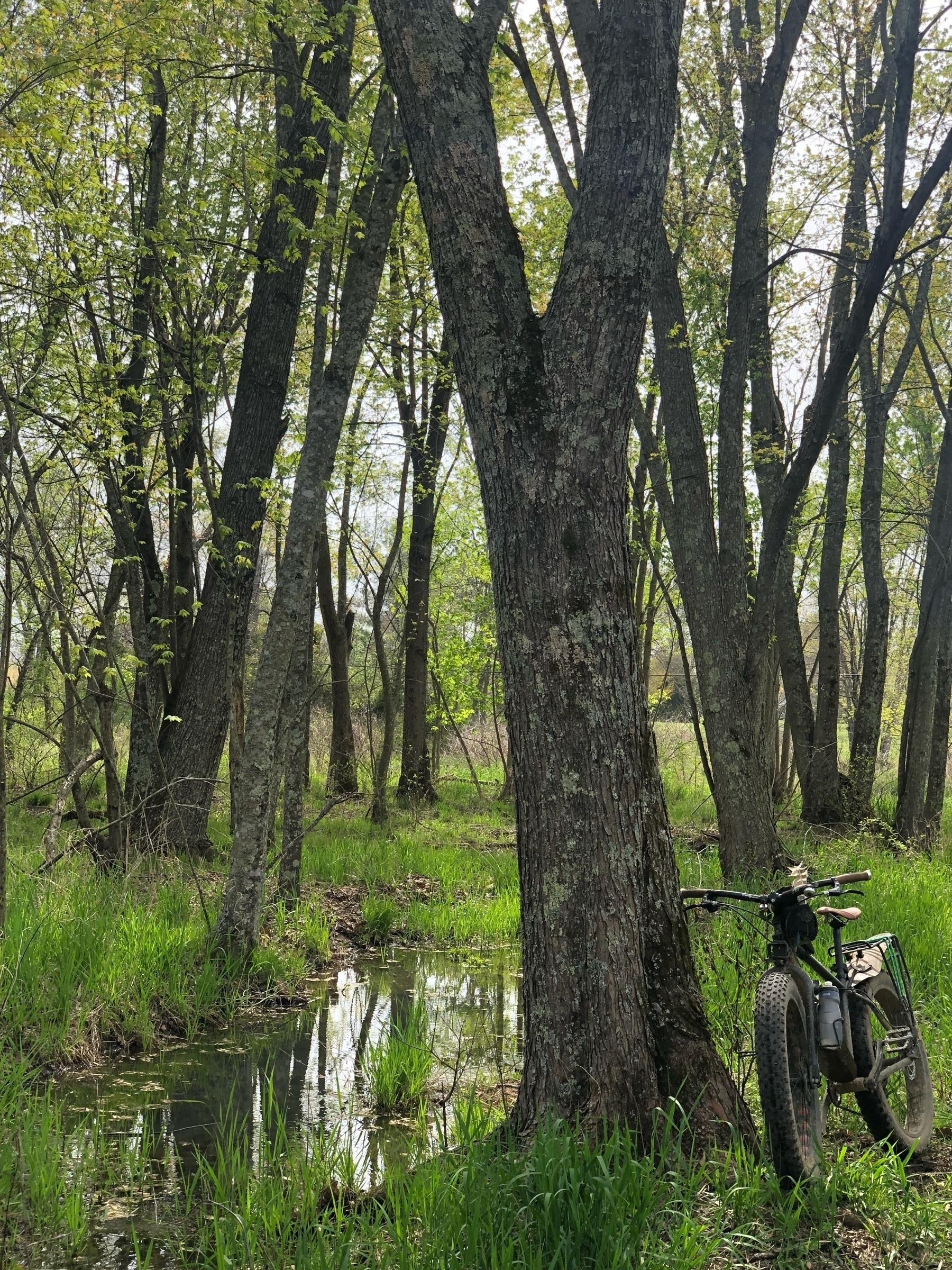
Thinking about Internet publishing
In my last post complaining about the complexity of posting and especially editing WordPress posts, I had a reply from Pete which led me down a rabbit hole. I tapped Pete‘s name to view his profile… I get so few comments here that I usually do this to see if commenters have their own blog which I might follow. I ended up on Pete‘s Micro.blog which found me reading through a conversation over there and an hour later I was checking out TiddlyWiki. Funny how easy it is to fall down these rabbit holes! I‘m not going to delve into TiddlyWiki here though I might in a future post. My interest in this post is frictionless posting, internet community, and publishing silos.
In my reply to Pete I wrote this bit which I‘m just going to paste with a bit of minor editing:
I’m just longing for an interface that is more simple! I’ve got my other blog tied into micro.blog and have used that app for posting on occasion. Actually, I think the micro.blog app and platform is a step in the direction that I’m looking for.
Thinking about micro.blog, as a specific platform and kind of community, it hasn’t been sticky for me. I visit and engage a little every so often but then stop. I think, in part, because it feels secluded. In a strange way, I both like and do not like that feeling of seclusion. Every time I pop over and try to use it I end up feeling like I’m in a kind of gated community. I suppose I’m longing for some sort of internet home that is connected in a more meaningful way to my analog life where I use Messages for family communications and Slack for local friends.
So, in total, my current internet experience, in terms of sharing with others, is this blog you‘re reading, my less tech focused Beardy Star Stuff, Twitter, Instagram, Apple Messages and Slack. In short, I have lots of silos, none of which are connected. Actually, some of my friends and family are also on Instagram so that is one connection. To my knowledge none of my friends or family read either of my blogs. For many people Facebook is a primary internet home but I quit it long ago and even back then it never felt like an internet home.
So, I come back to my desire for a different internet where more people post to a timeline of their own which they can share. Something as easy to use as Facebook but without all the ugly. Or alternatively, a version of Messages but which posts to a timeline rather than to a private chat. Thinking about Messages as it is and I can imagine a “My Timeline“ tab where I could just tap or click that tab to post. To see others that I follow, just tap another “Timeline“ tab. Well, at least it‘s easy to imagine!
I don‘t really know what the answer is. In so many ways it would seem to be a syntheses of blogs, Facebook, Twitter, Instagram, Messages and Slack. The danger of course is that such an integrated experience, is difficult or impossible to bring under one umbrella. Or possibly not desirable. The internet is meant to be decentralized.
In thinking about it I can see how Facebook has become so dominant as it offers much of this experience as a very easy to use portal. Of course we can see the danger of this as it has manifested in the practices of Facebook (the company) and the manifestation of Facebook the website/platform. Would it be possible to have a more ethical version of Facebook both in terms of the company and the created platform? Could a company like Apple build such a thing? I think, technically, yes. But, it would come with it‘s own set of problems. Apple already faces accusations of being too big and having too much control. So, perhaps not Apple.
But I can imagine some sort of standards-based consortium. A cooperative effort to build a new platform. Safer, more ethical, less susceptible to the propagation of misinformation but still valuable as a place for free expression. Is such a thing possible or is it too contradictory? And what about some sort of verification to cut back on unaccountability and anonymous posting? It would seem that there should be some way to create a standard of verified user that might serve as a filter to remove bots or accounts created with fraud/spam or other mis-use as the intent.
I doubt it would be easy but it would seem that it is doable.
Spring Wildflowers
The woods have come alive with a carpet of small white, pink and purple wildflowers.
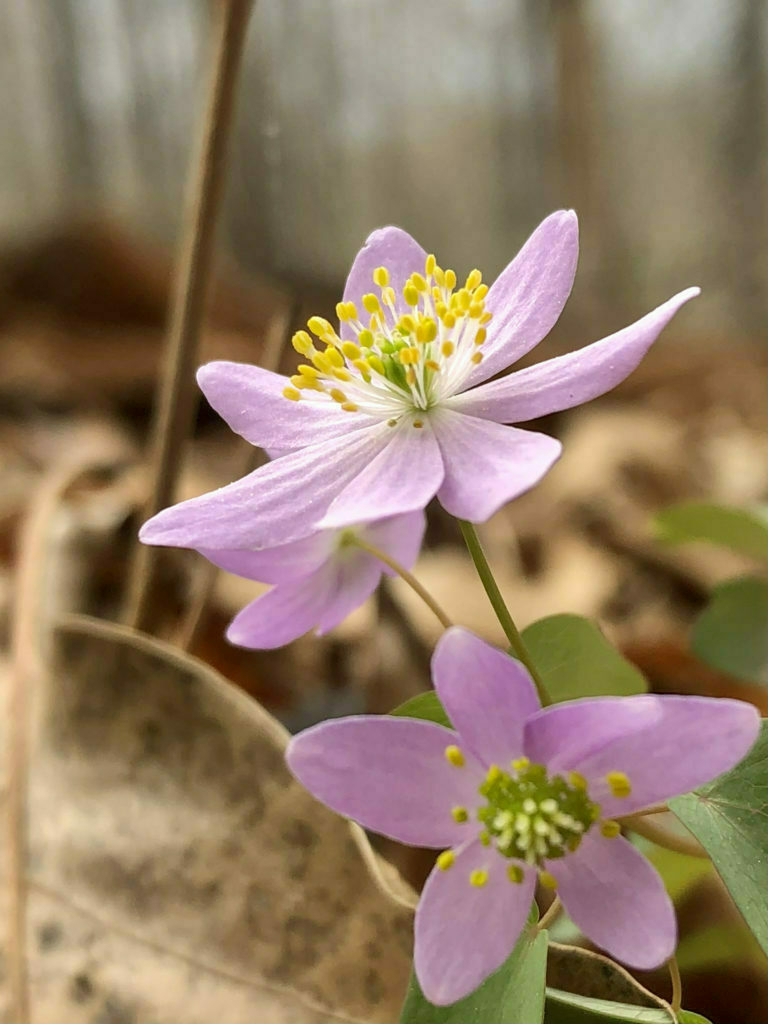


Publishing to WordPress is too messy
I published a post this morning and was reminded that this is too messy. Depending on the app I‘m using, it may not be too difficult to push the text, as html or markdown to WordPress via the WordPress share extension. But where It really falls down is in any editing I have to do in either the WordPress app or WordPress websites. The new editor, which comes in different flavors: Rich Text, Blocks, or HTML is just… eeeewwwwwwwwwww. Too complex, too messy. I sometimes think I‘d post more often if it were easier. Perhaps.
Also, I long for a day when there is some sort of easy timeline solution… easy for anyone. I sort of imagine an Apple service and app, call it iCloud Diary or something. Make it fun with a few custom themes. But easy to post to, something like Mail in terms of composing… super easy to post and edit, for non-techies. And like Messages for following friends, family… a sort of simple presentation of RSS, also for non techies. The point is safe, secure, trusted sharing. I guess a sort of Apple-based Twitter/Facebook. And perhaps make it easy to share from Apple services… Music, News, etc. And an easy to use, safe, secure alternative to Facebook.
Mac OS X Turns 20!
I missed this by a few weeks but wanted to mark the occasion anyway. When Apple released OS X twenty years ago (March 24, 2001) I was there on day one. I‘d actually been running the public beta on my lime green iMac. Exciting days! Like many I really loved the classic Mac OS which I‘d used from 7.x on my Color Classic all the way thru to OS 9. It was a beautiful, fun OS to use when it wasn‘t crashing! To be fair, it was mostly stable and I did a lot with my Macs before OS X. But my oh my, OS X was a thing of beauty! In hindsight we might look back on it as a bit overdone but in the moment I loved it. In the early days it was slow but even then it was fairly stable, especially in comparison to Mac OS 9.
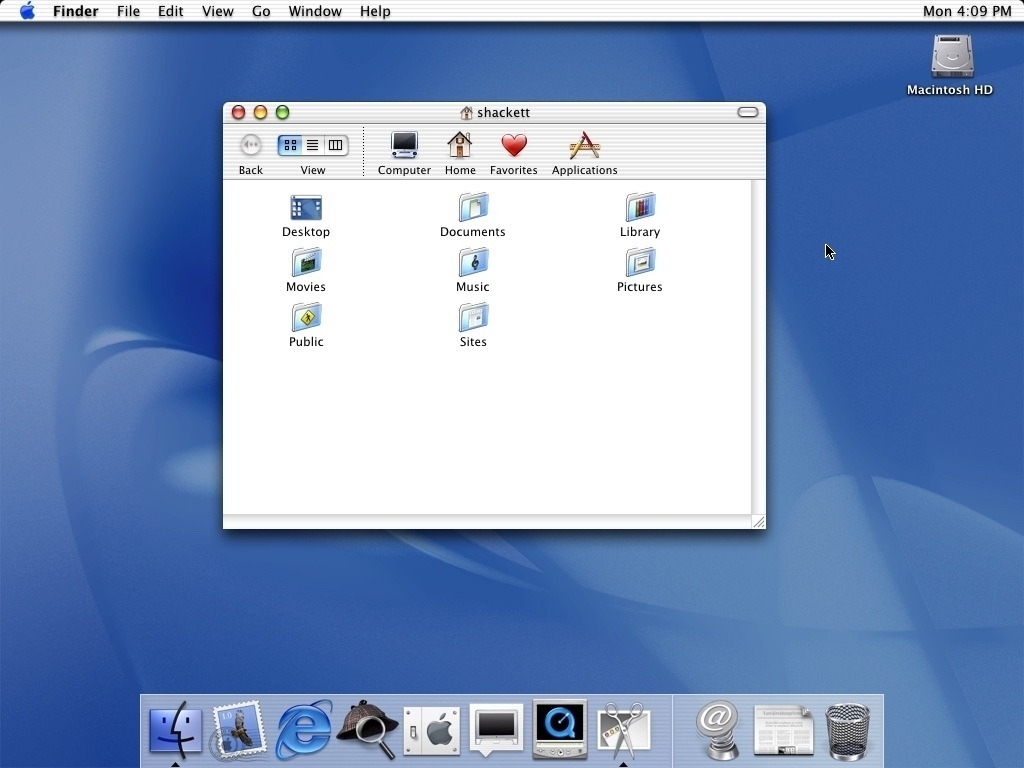
Apple made no secret that OS X was the future of the Mac OS. There would be no turning back and really, it did feel like the future. It was similar enough to the classic Mac OS that one could use it without feeling lost. But, with the new Aqua interface it also felt very different. Add to that the new Finder, the Dock, Mail and a few others. Then there was the new ability to create pdfs from any application via print to pdf which felt a bit like a super power.
Fun fact, in contrast to today‘s free, downloadable os updates, back in those days the os was delivered via DVD and cost a bit, in the case of OS X 10.0 it was $129.
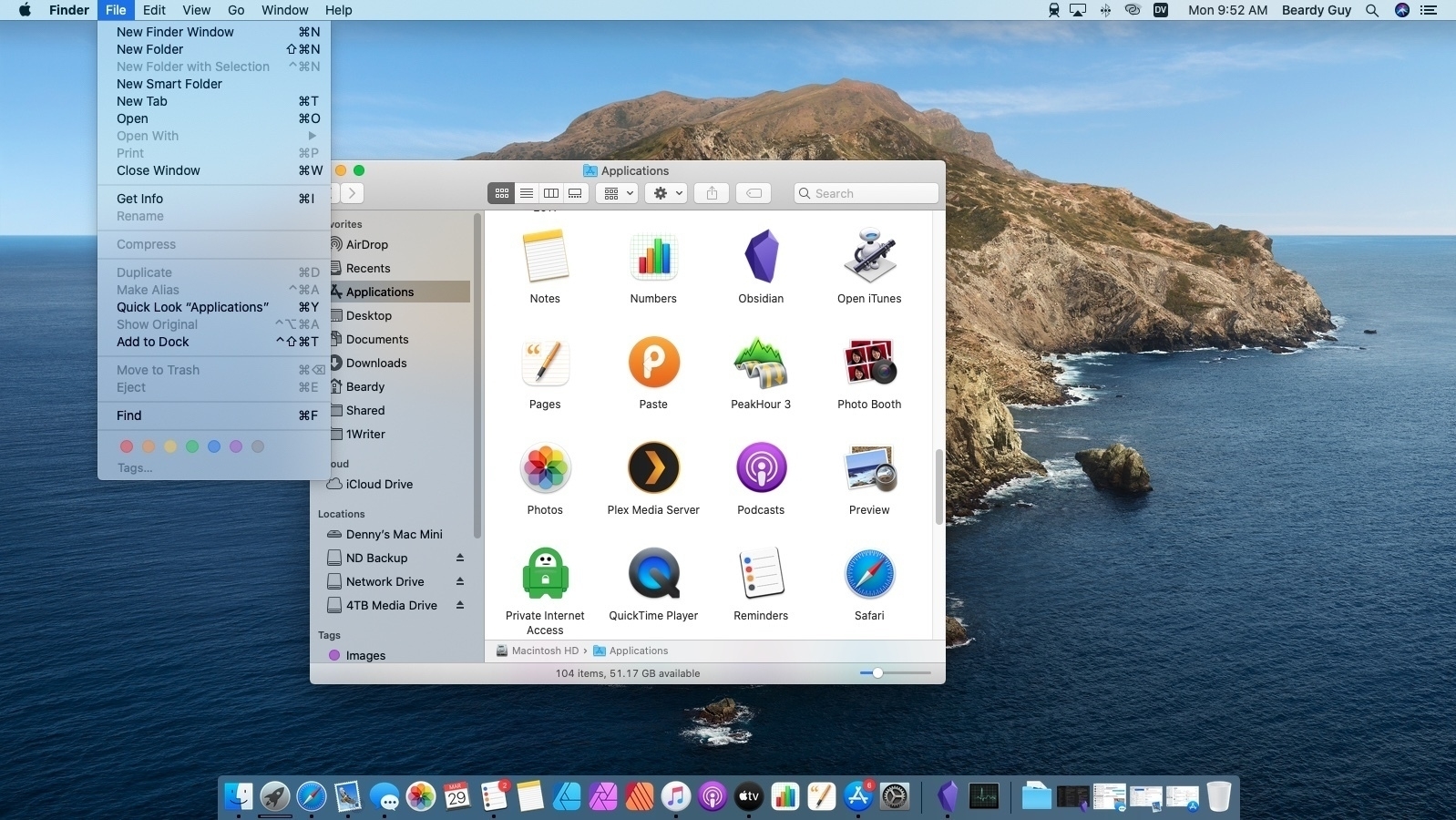
Looking at OS X then and now I am still somewhat astounded by the fact that we‘ve seen so many transitions over the past 20 years. That OS X is the core OS of the watch on my wrist, my phone, and my iPad as well as the Mac on my desk in an amazing iterative achievement. And while the pinstripes of Aqua were transformed into a variety of textures over the years and are now utterly absent, replaced by light grays, whites and subtle gradients, looking at my Mac running macOS Catalina or my iPad running iPadOS 14, I can‘t help but recognize the many persistent similarities. I see OS X on my screen. From the Dock to Mail to Files, traces of OS X in it‘s infancy continue today.
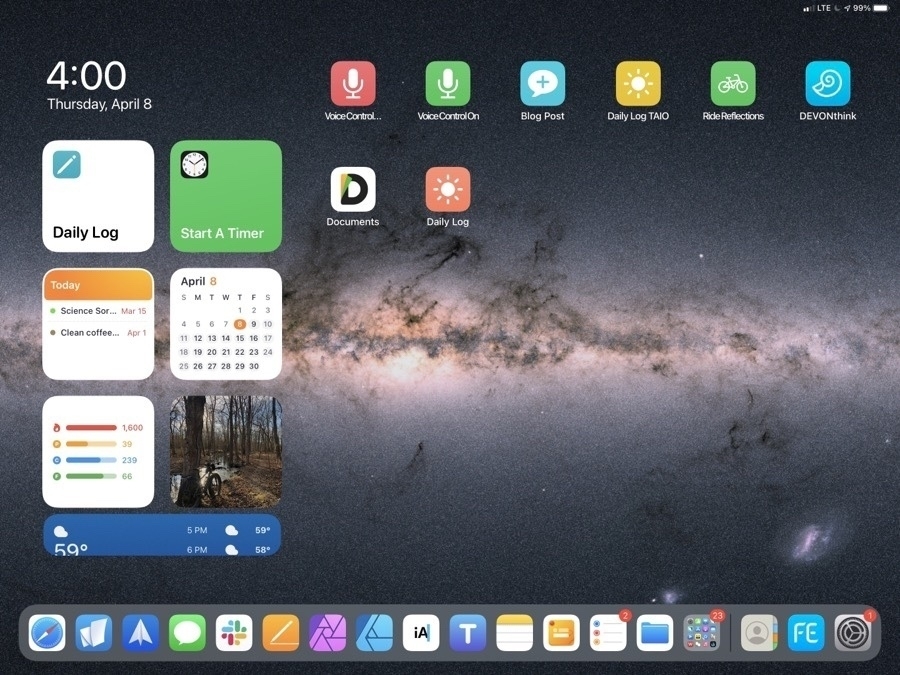
Looking through the excellent 512pixels image archive I can‘t help notice that as much as has changed over the years so much of that first 10.0 version is still so visible today.
Here‘s Steve Jobs at the MacWorld 2000 Keynote presenting OS X. A really fun video!
[www.youtube.com/embed/Sjl...](https://www.youtube.com/embed/SjlLG1EzJ2k)
From the web:
Stephen Hackett of 512pixels.net has a brief post which consists of some great links. A fantastic screenshot library. Start with OS X 10.0
Jason Snell has these three articles:
From Aqua to Catalina: The evolution of macOS X
Mac OS X: An act of desperation that formed the foundation for the modern Mac
John Voorhees over at Mac Stories: 20 Years Ago, Mac OS X Set the Stage for Today‘s Apple
Video Workflow
Last year when I started cycling a couple of family members suggested I get a GoPro. Partly to share with them but I think also because they were concerned with my safety and thought having a camera could be useful were I to have some trouble while out riding around. I eventually got one and have used it a good bit to record some of my rides. All for fun as I have no serious social media goals.
Of course I‘m working from the iPad and needed to figure out some sort of workflow. It‘s been messy! I‘m not sure if I‘m making it more complicated then it needs to be but I suspect that video workflows can indeed be a bit tricky. I expected to edit in LumaFusion. The question how and where to transfer files.
First, I started with the GoPro App and it‘s a terrible mess. It starts and seems inclined to work in portrait mode. Sometimes it can be coaxed into landscape but often goes back to portrait. Probably intended to be a phone thing. Only thing it‘s good for is letting it auto-create a few clips for a quick share. I made the mistake of getting in the habit of connecting to the camera wirelessly to transfer files to the app and then exporting. It took me far to long to figure out that it‘s a bad method as getting the raw clips out is overly complicated.
First, these clips should be accessible in the Files app but they are not. Second, any attempt to share a clip also seems to export the clip to the Photos app whether you want that or not. So I end up with the shared, exported clip but also a video in Photos. It‘s an extra file that I don‘t want backed up to iCloud photos so I have to delete it before that happens. So, if I come back after a bike ride with 10 video clips using the app to get those out for editing is more difficult than it needs to be if I‘m using the app. If I let the files accumulate in the app as I did then getting them backed up to an external device is really time consuming. I ended up saving them all to Photos then exporting to an SSD. Would have been great to open two Files windows and just drag and drop.
Okay, with that out of the way, my process going forward to skip the GoPro app altogether. I‘ll plug the GoPro into the iPad and import directly to Photos. Again, with I could mount the camera directly in Files as a storage device. At some point I might consider getting a new hub with built in flash reader which would allow for that. For now, I‘m importing to Photos and then saving to an SSD via the Files app. Now, just to point out, LumaFusion can access files directly from Photos so why not just work from there. Well, as mentioned above, I don‘t want all these files using up bandwidth and storage in iCloud.
Okay, so, GoPro camera to Photos to SSD. The last step with LumaFusion is to create a project and add media. For this I have to import media from the SSD to LumaFusion which, in turn, copies the files from the SSD to a local folder on the iPad. This works but, again, something to be aware of when thinking about iCloud back-ups and bandwidth so I‘ve excluded this folder from my iCloud back-ups. Problem solved! Mostly. My iPad is the 256GB version and really, now that I‘ve cleared out the accumulated media from the GoPro app I‘ve got plenty of space for any active LumaFusion projects, over 120GB of free space. It would be great if LumaFusion projects could link to external storage devices for media without copying over locally but to my knowledge this is not possible yet. But given my level of use I‘ll get by with no problems.
Still here!
So, it’s been awhile. Almost a full year since my last post here. But really, that’s just the way it goes. Interesting, looking at my last two posts from Late March and April 2020 explains why I’ve not posted here in a year which is to say that not much has changed that was really worth posting about. There are plenty of websites in the world sharing the details of Apple related news. Lots of sites discussing using Apple tech. This site is my journal of sorts where I’ve enjoyed sharing my work or my tech journey as it evolves and over the past year it has been steady-state. It’s been a fantastic year but with no new developments in how I’m using my iPad or other related Apple gear. Looking at the last two posts made me laugh because as I sit here writing I realized why I’d not posted: my set-up is exactly the same.
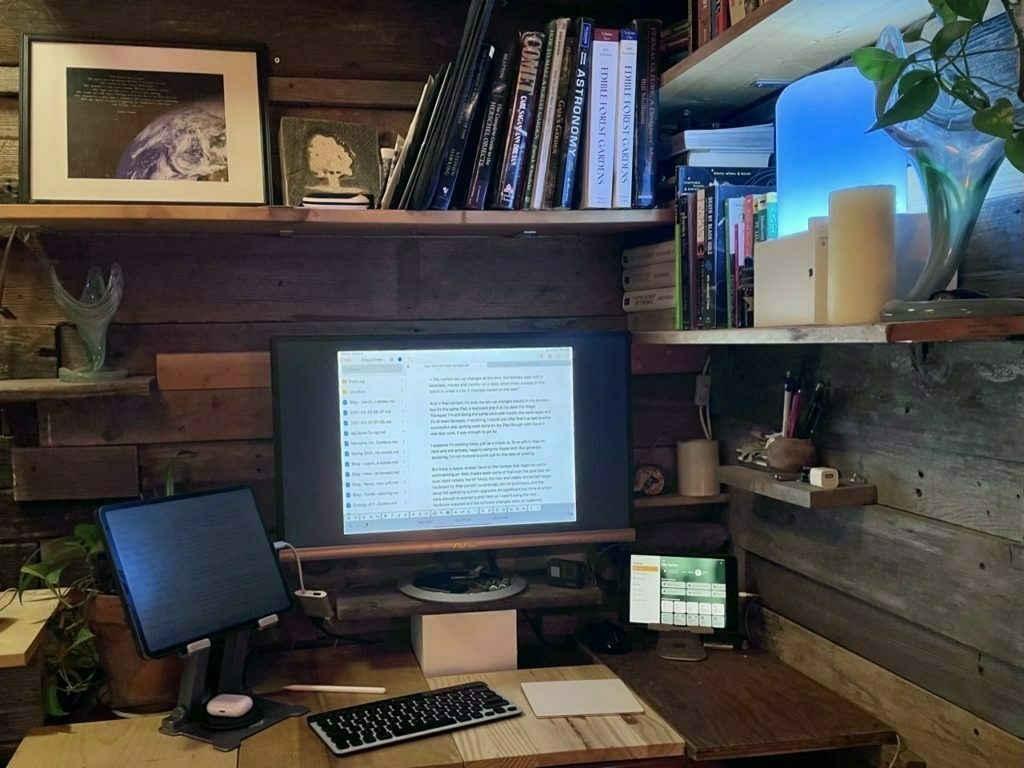
My iPad Pro, Smart Keyboard Portfolio and the Magic Trackpad 2 in a scene that is nearly identical to the second image in my March 31 post which was captioned:
“My current set-up changes all the time. Sometimes used with a keyboard, mouse and monitor on a desk, other times outside on the porch or under a tree. It changes based on the task.”
And in that context, it’s true, my set-up changes based on my location but it’s the same iPad, a keyboard and if at my desk the Magic Trackpad. I’m still doing the same work with mostly the same apps and it’s all been fantastic. If anything, I would just offer that I’ve had another successful year getting work done on my iPad though with Covid it was less work, it was enough to get by.
I suppose I’m posting today just as a check-in. To re-affirm that I’m here and still actively, happily using my Apple tech. But generally speaking, I’m not inclined to post just for the sake of posting.
But there is Apple-related news on the horizon that might be worth commenting on. Well, there’s been some of that over the past year for sure, most notably the M1 Macs, the new and widely acclaimed Magic Keyboard for iPad (which I surprisingly did not purchase), and the usual fall operating system upgrades. All significant but none of which were enough to prompt a post here as I wasn’t using the new hardware released and the software changes were, as expected, incremental.
I’m a little antsy about the possibility of a new iPad Pro being announced and I still ponder the purchase of the Magic Keyboard for iPad but given how well my current set-up works I’m not sure I’ll buy anything. My 2nd Apple Smart Keyboard Portfolio is showing the same wrinkling and bubbling that the first one did before being replaced under warranty. Eventually I’ll need to replace it with something. And in the 2+ years of use I’m definitely seeing degradation in the iPad battery. I’m just not sure it warrants replacement yet because for the tasks I use it for it remains a very fast and capable computer. So, ¯(ツ)/¯
What I‘m hoping to see is currently rumored USB C with Thunderbolt which might also come with an iOS update allowing for better external monitor support similar to what we saw last year with the big mid-cycle release of trackpad support. If I were able to have a second desktop on another display (not just the mirroring that we have now) that took full advantage of the full screen width without the black bars on either side, well, that would likely be enough for a purchase. Add to that the faster processors and 5G (in my area I‘m getting excellent 5G thanks to Sprint/T-Mobile) and that would be a very solid upgrade. Though I‘m still not sure what I‘ll do for a keyboard.
Learning to walk in the woods
 So, file this under “Living here for most of the past 10 years and still get to see something new!” On my trail walk a couple days ago I had my first extended viewing of an owl. I’ve caught sight of them several times while walking but usually it’s when they leave one tree and fly to another and are then out of sight. But on this particular walk I saw one fly and it landed in a tree further down in the direction I was headed. I kept an eye on it and found it in the tree as I got closer. I was able to look for a full minute or so. I could have stayed longer as it didn’t fly away but it was up high enough that I couldn’t see details without binoculars. But still, had a good look. My immediate thoughts were that I need to remember to look up more often rather than my usual focus on the path in front of me.
So, file this under “Living here for most of the past 10 years and still get to see something new!” On my trail walk a couple days ago I had my first extended viewing of an owl. I’ve caught sight of them several times while walking but usually it’s when they leave one tree and fly to another and are then out of sight. But on this particular walk I saw one fly and it landed in a tree further down in the direction I was headed. I kept an eye on it and found it in the tree as I got closer. I was able to look for a full minute or so. I could have stayed longer as it didn’t fly away but it was up high enough that I couldn’t see details without binoculars. But still, had a good look. My immediate thoughts were that I need to remember to look up more often rather than my usual focus on the path in front of me.
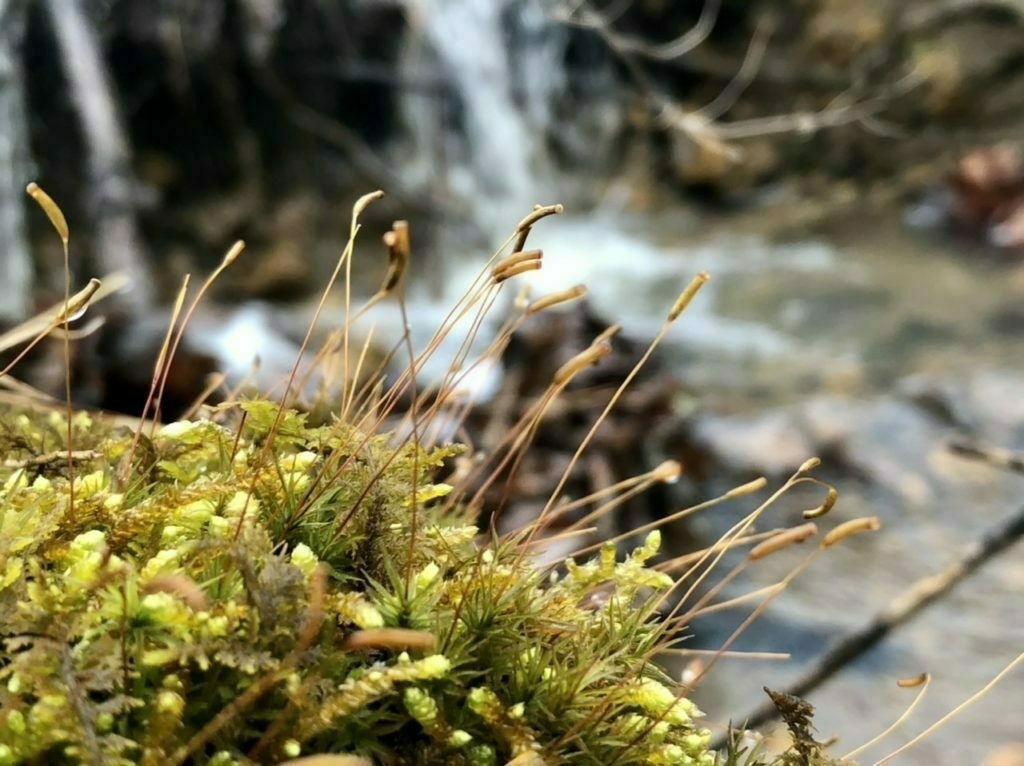
Yesterday while walking after a lot of rain I was stopping often to photograph and video the streams and little water falls. It got me into a more observational mode. While I had to watch the path for slippery spots I was walking more slowly and just generally being in a more observational mode rather than walking for exercise mode. I stopped and just stood still looking off through the woods. With the trees and lower level foliage still bare it’s possible to see a much longer distance. Within just a minute of stopping and looking deeper into the woods, at about the limit of my eyesight, I caught sight of a fox. I should note that I’m not 100% certain given the distance but given the size, shape and movement of the animal I’m fairly certain it was a fox. It was only a glimpse but still, exciting!

Again, I was reminded what a poor observer I often am. My habit when walking is to be walking. Even if I do rememer to look up I’m usually still moving. So, another lesson learned is that not only do I need to look up more often but that I need to stop and stand still more often. I think that act, of being still for at least a few minutes is what will really allow for much deeper observation of the landscape and what is happening around me. Not only that but were I to carry a small sitting stool or be willing to stop and sit on the ground for say, ten or twenty minutes, that extended stillness would also allow for my becoming less visible to other animals, notably those I rarely see such as fox.
Really it’s an obvious thing I’m stating here but I suspect it’s also something others might forget to do while in the woods. It’s an easy thing to forget to do, especially when provided nice walking paths, to just stop and hold. Also, I’ll note that when I go for walks it is for the purpose of exercise. To walk for observation is a different thing and I’ll need to remember that and find a balance between the two.
Spring is here and all around green buds are popping. In the next few weeks the open understory of the woods will fill with foliage and the long view I’m enjoying now will shrink to a much smaller distance. I plan to practice a more active observation with more frequent stopping and suspect that will be beneficial but it will likely be in the winter months that such a practice will really prove helpful both in terms of wildlife observation as well as developing a better understanding of the topography of the land.
How we move forward
My group of local friends share a Slack group. This morning one of them asked:
(What the is the matter with the @$&-“.! Democrats)
No doubt a response to the recent maneuverings in regards to legislation for Covid relief and raising the minimum wage.
Here’s the response I posted and upon posting decided it should be a blog post here.
Oh, I’d say nothing is the matter. They seem to be doing EXACTLY what they always do. There’s absolutely nothing out of the norm with this.This is who they are. On the whole are just a slightly less fucked up version of the Republicans. Add to that the politics of getting reelected, blah, blah, blah and all the other garbage of this filthy fucked up system and this is exactly what we have had for decades.
While the Trumper folks are unhinged and racist and seeping in conspiracy, the anger and rage and frustration seems to be a fairly common trait amongst much of the population… hence Occupy Wall Street. The 99% - which is why the whole system really does need to be uprooted
All we’ve accomplished is temporary removal of an idiot, arrogant, fascist wannabe dictator.
The dysfunction of the 2 party system is still in place. It will function well enough for the 1% as it has for decades. And that’s all that matters.
I’d guess that the democrats will remain split, progressives and establishment… they’ll fumble around for 2 years then 2 more years. Meanwhile, the republicans will do what they can to suppress the vote in future elections. It’s a clusterfuck that won’t end until the polite liberals of the U.S., step out of their apathy and get a bit angrier, more agitated and more willing to engage. That said, seeing the lunacy of the angry right, I don’t know what an energized liberal population would really look like. How would it, could it, actually engaged with the “other half” of the 99%?
It would seem to me that the way forward, if there is a way, is to chart some new social territory.
Which is to say, the structure has to be rebuilt. And, which is to ask, are the people that would need to work together to do this capable of doing it? Can common ground be found and trust established so that the 99% can figure out a way forward? Personally, trying to not veer into pessimism but to remain honest, and I don’t know what it would take in this current culture for people to begin that move. Is it possible for us to just be neighbors, to view one another as people and step past the labels, emotions, distrust, fear, etc?
Which brings me to the way forward. I’ve spent the past couple weeks dwelling again in thoughts of Social Ecology and Murray Bookchin’s ideas for how humans might organize society more democratically, more rationally. In short, building local, community based democracy as the foundation and working up from there. It would mean turning everything we know about government and economy on it’s head.
So, what’s possible? Is this kind of radical change possible in the U.S.? It’s interesting that we, as a nation, have become so pessimistic about the possibility of change. And yet, we can look elsewhere on the planet and see such examples. Most recently and very inspiring is Rojava. Why would this not be possible here? Of course it would be possible.
Thinking about what is possible or not possible. Somewhere along the way we, as a national culture, fell into a deep rut of pessimism. The idea that we might turn things on their head seems an impossibility! Why, why, we couldn’t do that! We just can’t! Direct, participatory democracy?? No, it’s simply not possible! We collectively seem to have lost (or given up) our ability, our will, to experiment, to problem solve and to really work towards solutions.
Tumbling and Exploring
First, a couple weeks ago I fell down a rabbit hole. It was chance really but the kind of thing that happens when you’re in the right mental mode for it to happen. I visited an Apple oriented forum that I used to frequent but rarely visit these days. Not sure why I decided to pay it a visit but by chance found a thread that led me to a wiki-style information management application, Obsidian, which was just the thing I needed to begin a tumble into a new project. I think I’d already been considering something, I just had not allowed it to condense into anything solid.
So, I tumbled and the cloud began to condense. The idea is to write more, primarily for my own personal wiki. About what? Well, mostly, just a chronicle of sorts. A daily log about life. An exploration of my life lived. Ideas, people, events… life up till now. The idea being to reinforce memories and perhaps rekindle interests of my past. Or at the very least to revisit them.
Tumble, tumble. As I began putting this project into place I began writing which is, of course, the point. Writing and remembering. Writing and reflecting. Writing and exploring. And on and on.
I’m not sure how often my posts there will cross over to here as that’s not really the goal. But I suspect it might happen. Or it might be that a post there will turn into a post for here. But I have to say, it’s been rewarding to spend more time writing. Nothing fancy as nothing that I write ever is. But just taking time to mull things over via the written word. And to make it a daily routine. I’m not sure how long the practice will last.
The first big tumble this first couple of weeks has been a revisit to social ecology. I’ve enjoyed it and am just beginning that re-exploration really. Social ecology is not the sort of thing that is explored casually. Developed by Murray Bookchin over several decades, it’s a broad and deep exploration of human history, specifically the human development from nature into human culture based upon hierarchical social systems of command and control, of domination. Bookchin offered analysis of this historical development, he explored it with great depth and from this he developed the beginnings of a movement for pushing beyond what we have today. I’m not prepared yet to write at great length because this will require more time. I’m starting with a re-read of his foundational work, The Ecology of Freedom which is one of several of his books that I read in the late 1990s while working on my Masters thesis via the Institute for Social Ecology.
So, the past few weeks have been the beginning of delving back into these books and ideas. Not that I ever left them but having them stew in the depths of mind is not the same as active consideration. So, there’s that and for now it’s enough for this post. More soon and more on a regular basis I hope.
Climate Change and Personal Responsibility
It seems that once a year I end up writing a post about climate change and personal responsibility. It’s a repeating thread based on a long running frustration that I have with this notion that we humans are somehow incapable of affecting change.
We act as though the government that we all consider broke, the government that has, thus far, refused to address the problem of our time in any meaningful way, is suddenly going to fix it. It doesn’t and so things get worse. Year after year the climate reports keep coming and they always report that the situation is more dire than previously thought. Our response is to throw our hands up in the air. We gnash our teeth and rend our garments in despair (some anyway) but we keep on keeping on. We keep driving. Keep buying. Keep heating and cooling to our comfort. Keep flying. Keep doing everything and anything. As if we need the government to force us to behave better.
We say to ourselves that it’s really industry that is the problem as if global capitalism operates in a vacuum and for no reason. Somehow we conveniently forget that capitalism operates to feed our manufactured desires (and of course, for their profit).
In the absence of meaningful action for 20 years taken by government, industry or citizens, we now find ourselves here and now. And we still insist that we are powerless to make changes. I think we can and should do better.
So, here we are, February 2021. A new president, a Congress controlled by Democrats and we will see if any progress is made. It’s clear that Biden wants to push hard to not only undo the backward steps by the previous administration and go even further than Obama did. That’s great. But we can see that, as expected, there will be obstructions and the interests of energy producers, particularly those based on coal, will fight back. So, we can expect, as usual, a few steps forward but it won’t be enough. And when power swings back the other way progress will again stop and possibly push back the other way.
All that said, when I look around at the U.S. in 2021 I see a lot of confusion about basic truth and reality. In a world of delusion, when half the population seems guided by conspiracy theories, it’s increasingly difficult to have much hope in rational, science-based thinking and decision making be it in personal life or any level of government.
Ugh.
Gravity Bullseye Monster Long-term review
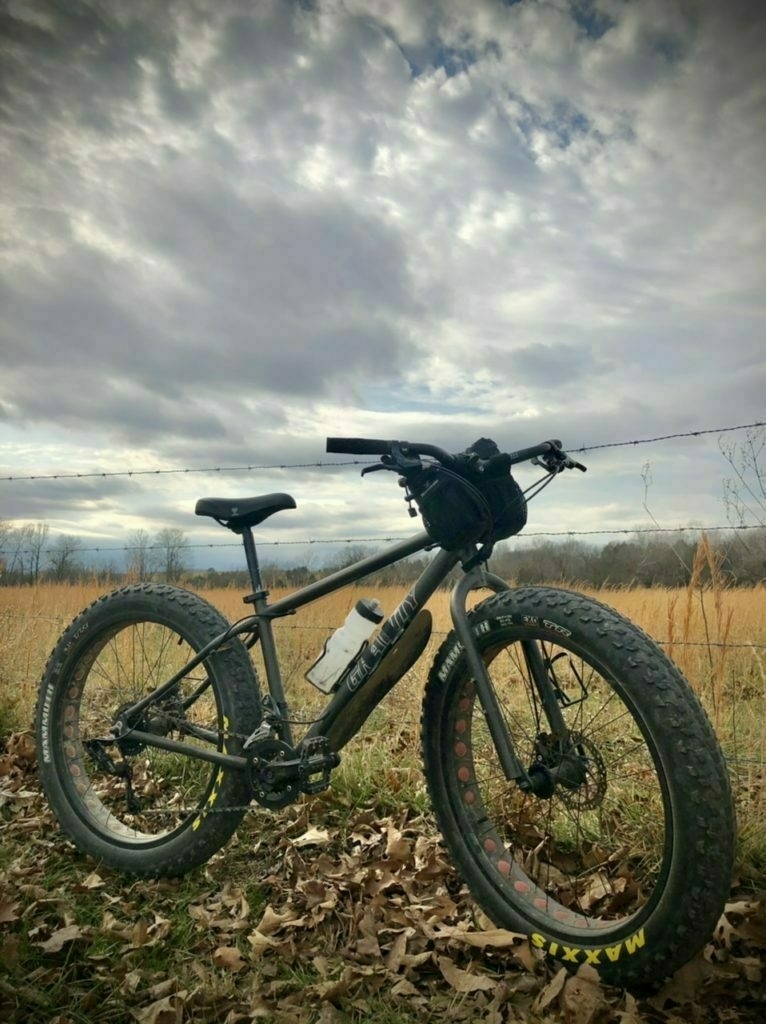
Back in mid-April, I purchased a Gravity Bullseye Monster (what a terrible name for a bike, I’ll abbreviate as GBEM!) from Bikes Direct. I’d written up a brief initial impressions post after riding it for a week or so. Since that time I’ve shared many photos and various mentions of my fat bike rides but never followed up with a proper review. With my knee problem now (apparently and hopefully) solved I’ve been back on the fatty for a couple weeks of daily trail riding and it occurred to me to check my mileage on the bike: a bit over 2,200. So, yeah, time for a long-term review.
I’ve made no secret of my love for this bike. Truth is, I’d likely love riding any decent fat bike but this is the one I have so it’s what I’ll be writing about. Of the miles I’ve put on the bike I’d estimate that about 55% were road miles, 10% gravel and 35% trail. While many fat bikes are bought for use on snow I bought mine for year-round trail riding. In the late 90’s I’d done a good bit of riding on various mountain bikes, aluminum and steel, most with front shocks. Of course, fat bikes are a relatively new thing and while many people are still riding mountain bikes, I went with fatty for a few reasons:
- The ride felt cushy enough without shocks, including the rear wheel.
- 4” Fat tires are forgiving in a way that 2.5” mountain bike tires are not. Which is to say, they roll over things that a mountain bike tire might catch on.
- The fat tire experience provides for a kind of slow, casual trail ride. Sure, I can go fast, but the fat tire form factor almost suggests a slower ride which appeals to me. Almost like a beach cruiser for the woods!
So, getting on with the review of the GBEM, I’ll get the negatives out of the way first.
This is a budget bike which sells for $499 to $599 so that means it’s got some compromises (actually, I’m cooking up a separate post about budget bikes and direct consumer bikes as compared to the name brand, more expensive bikes found at bike shops). That said, only three specific components really stood out to me as worth mentioning as negatives: the pedals, handlebar and the chain.
[caption id=“attachment_1803” align=“aligncenter” width=“900”]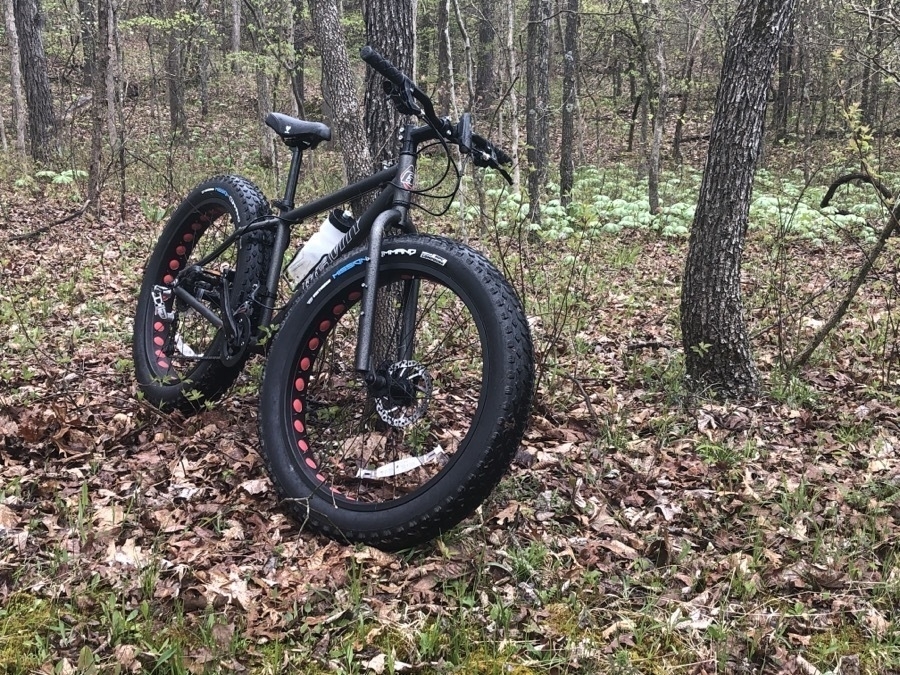 The stock configuration of the bike with just a water bottle cage and light attached.[/caption]
The stock configuration of the bike with just a water bottle cage and light attached.[/caption]
I changed the pedals within the first week. Not much to say about the pedals other than they are just cheap pedals fine for a casual ride around the neighborhood or occasional trail ride. It’s assumed many riders will replace the pedals anyway, the stock pedals are there so that it’s a functional bike out of the box. I replaced them with Rock Bros platform pedals which have worked well. They could probably ship with a slightly better, wider plastic composite platform pedal that would work for some people without a change. In fact, these platform pedals are the pedals that ship on the Poseidon X and I’m still using them on that bike with no problem.
The handlebar, 620mm, is really too narrow a bar to be the default. It works but should be a bit wider. But on many new bikes, like the pedals, it is assumed they will be changed by more “serious” riders. I changed it out to an Origin8 Space Off Road II Handlebars. Still, would be nice if they started the bike with a wider handlebar.
The chain included with the GBEM was a fairly cheap chain that should have been replaced at about 1,300 miles. I forgot to check wear until I hit the 2,000 miles mark. I let it go too long and as a result also had to replace the rear cogs too. My bad. I should have started checking for wear at about 1,000 miles. That said, a well cared for, quality chain on a bike that’s not being ridden hard might be expected to last 2,000 miles or more. That was the case for the chain on the Poseidon X which lasted well over 2,000 miles. Oh well. I’ve replaced the chain (a higher quality chain) and cogs and will be sure to stay on top of chain wear this time.
Some nitpicks that don’t affect the ride quality but I think are worth mentioning.
- The stem has a 2 bolt, handlebar clamp size of 25.4, both of which are old standards. More modern stems are 4 bolt attachments and have a clamp size of 31.8. When I upgraded the handlebars I should have also upgraded the stem to the modern standards. Oh well.
- The head tube is not tapered which limits fork upgrades. Not a deal killer as I don’t intend to upgrade my fork but again, worth mentioning for others that might not be aware of the issue.
- The seat post paint scratches off instantly with any kind of adjustments or post movement. Also, no height indicators on the post. It’s a cheap post so not surprising.
- Front wheel foot strike! Common to a lot of these bikes is that when turning the front wheel, you may hit it with the toe of your shoe as you pedal.
That’s it for the specific component related negatives.
The rest is generally positive.
The brakes and drive train have performed fairly well. They were pretty well set out of the box.
The Tektro mechanical brakes are fine for me. They may not have the smooth modulation associated with more expensive hydrolic disc brakes but I suspect they are also easier to maintain. I’ve seen complaints online about the brakes but my hunch is that it’s often the case that buyers either are not adjusting the brakes that need adjusting or they are not given a little time to “bed-in”. These brakes, if properly set, should be able to lock-up the wheel when pulled fully. In that case it’s just a matter of learning how to operate them which is to say, careful modulation by the rider. They may never be as smooth as more expensive brakes but they do stop the bike very quickly if needed.
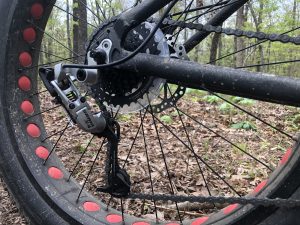 Moving onto the drivetrain, when I was replacing the cog set and chain I noticed that my rear derailleur hanger was very slightly bent (likely out of the box). I should have looked closer on initial set-up. When I bent it back I was able to change the limit screws a bit. Previously one was maxed out due to the bent hanger. I’d tweaked it when I set it up and didn’t realize the problem was actually the bent hanger. Anyway, the SRAM shifters and X4 rear derailleur have been fine. The Shimano Alivio front derailleur is good too. These are low-mid level components, so, not the best, but not bad. Perhaps heavier and slower to shift but nothing that has bothered me. The SRAM x4 trigger shifters work as expected.
Moving onto the drivetrain, when I was replacing the cog set and chain I noticed that my rear derailleur hanger was very slightly bent (likely out of the box). I should have looked closer on initial set-up. When I bent it back I was able to change the limit screws a bit. Previously one was maxed out due to the bent hanger. I’d tweaked it when I set it up and didn’t realize the problem was actually the bent hanger. Anyway, the SRAM shifters and X4 rear derailleur have been fine. The Shimano Alivio front derailleur is good too. These are low-mid level components, so, not the best, but not bad. Perhaps heavier and slower to shift but nothing that has bothered me. The SRAM x4 trigger shifters work as expected.
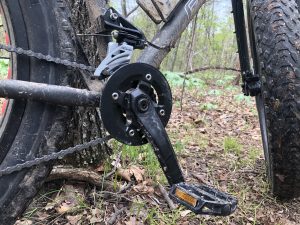 It’s a 2x drive system with a generic crank, 22/32T chain rings and an 11-34T 8 speed cassette. I found this range to be perfect for the mix of riding I do: A bit of road, gravel, trail with short, punchy climbs on the trail. The lowest gear enables me to get up the steepest climb with no problem. For some riders that might have health issues or physical constraints a lower gear might be helpful on the trails but I think this range is good for most. All that said I think I’d prefer a 1x 10 speed on this bike. Similar to the Poseidon X but with a slightly lower gearing. The second chainring on a fat bike seems unnecessary given that it is likely going to be primarily ridden off road.
It’s a 2x drive system with a generic crank, 22/32T chain rings and an 11-34T 8 speed cassette. I found this range to be perfect for the mix of riding I do: A bit of road, gravel, trail with short, punchy climbs on the trail. The lowest gear enables me to get up the steepest climb with no problem. For some riders that might have health issues or physical constraints a lower gear might be helpful on the trails but I think this range is good for most. All that said I think I’d prefer a 1x 10 speed on this bike. Similar to the Poseidon X but with a slightly lower gearing. The second chainring on a fat bike seems unnecessary given that it is likely going to be primarily ridden off road.
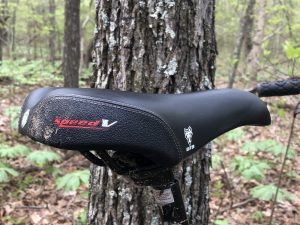 The WTB saddle, “Speed V Sport” is commonly seen on mountain bikes and fat bikes of this mid-range. It’s a pretty decent seat and I’ve got no complaints other than it’s a bit on the heavy side with a bit too much cushion but it’s a good choice for a starter bike for new cyclists might not ride all the time. I’m currently using the Charge Spoon saddle that I purchased for the Poseidon. The seat post is the same size so it was easy enough to swap it over and I’m used to the Spoon saddle so, why not?
The WTB saddle, “Speed V Sport” is commonly seen on mountain bikes and fat bikes of this mid-range. It’s a pretty decent seat and I’ve got no complaints other than it’s a bit on the heavy side with a bit too much cushion but it’s a good choice for a starter bike for new cyclists might not ride all the time. I’m currently using the Charge Spoon saddle that I purchased for the Poseidon. The seat post is the same size so it was easy enough to swap it over and I’m used to the Spoon saddle so, why not?
The wheel set is pretty typical at this price range. Hubs and rims are generic and on the heavier side though rims do have weight saving cut-outs. They were true out of the box and have stayed true for 8 months of riding so I’ll consider them fairly durable. They’re not tubeless ready or compatible which is fine with me as I’ve had no problem with tubes and slime. To my knowledge no tube punctures yet. I think the thick rubber of fat tires are pretty durable by default. I’ve ridden over a lot of thorny areas as well as brush-hogged fields full of very woody stems, creek beds with large rocks and no problems. Speaking of tires…
[caption id=“attachment_1778” align=“aligncenter” width=“625”]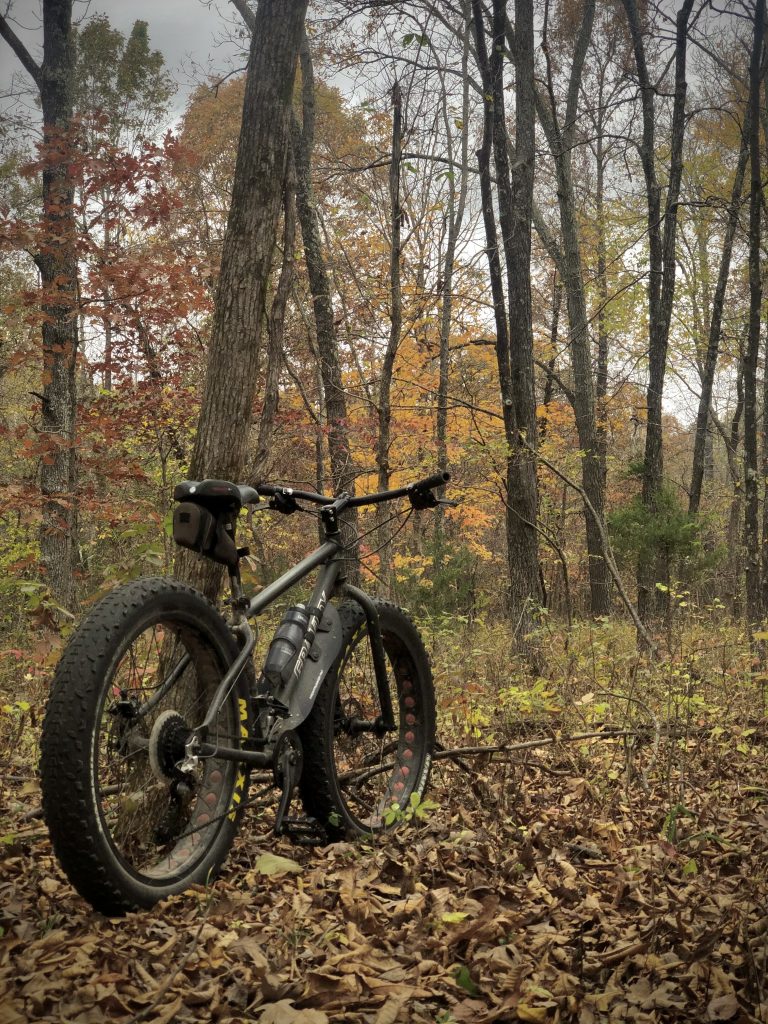 The bike with upgraded handlebars, tires and a few added accessories.[/caption]
The bike with upgraded handlebars, tires and a few added accessories.[/caption]
The GBEM comes with Vee Tire Co. Mission Command tires. Durable wire beads and bit heavy but a good overall tire to start with. I rode mine for a few months before I changed to a pair of Maxxis Mammoths. They’re a folding bead which means they’re a bit lighter, more supple with a solid center tread that rolls very well on pavement or trail. Given that I now have the Poseidon X to cover longer road/gravel oriented rides my next set of tires, Maxxis Minions, are more aggressive as I won’t have to worry about the smooth center tread for the little pavement I do on this bike. I’ve found in recent days that a layer of partially frozen sub-soil with a top layer of melted mud really creates an ice-like surface that the Mammoths slip on. I’ll likely post a comparison of these two tires in the near future. I mentioned above that they seem fairly thorn resistant and they should be, they’re expensive. Decent fat bike tires cost $90 for ONE tire. So, $180 (or more) for a pair. Yikes.
A few words about the frame and fork… it’s a 6061 aluminum frame and a cromoly fork. Nothing fancy here. There are lots of attachment points on the frame and fork. One set on the inside of the down tube, one on the outside. 1 set of 3 on each fork leg. That’s 4 possible water bottle cages or anything cages if I wanted to go camping and carry larger items. And plenty of mounting points for fenders or racks. I’d initially planned to skip adding any kind of rack but recently ordered one for the back. I do a lot of trail work and would like to have the option of toting tools out there. Also, it’s just generally convenient to have a rack and bungee cords for picking up packages or transporting anything that won’t fit in a backpack.
The overall bike as recently weighed with the above mentioned parts (no rack yet), was 38.4 lbs and that was with the front fender, bottle cages, water bottle/feeder bags. Which is to say that for a fatty it’s on the mid-upper end of expected weight. I’ll save detailed comparisons to more expensive bikes for a future post but for now I’ll just say that in this price range, a fat bike like the GBEM offers the rider a fairly easy and stable ride on trails that might normally cause problems on bikes with smaller wheels and tires. The fat tires just roll over things such as larger rocks, fallen branches or holes. I think they allow a rider to feel safer and more confident when encountering the things often found on a trail.
Related, another benefit of a fat bike (generally speaking) is the added traction for steep ascents and descents. Whether I’m riding on a gravel road or trail, assuming average conditions, I’m likely to feel like I’ve got good traction on the GBEM. Certain muddy conditions can eventually get a bit slippery but with the large tires a fatbike tends to provide solid footing. I really notice this when riding up steep hills with loose debris on the surface. Whether a loose gravel road or a trail with leaves, sticks, rocks, acorns, etc, a steep slope can often cause enough loss of traction to get you off the bike. The wide contact patch of the GBEM gives me the best chance of slowly peddling up and over these conditions. The steepest portion of my trail is a 13 to 14% grade, rutted hill with roots, leaves and fairly large rocks. It’s not easy but I make it up every time on the GBEM.
What about road riding? Well, a fat bike is definitely not a bike I would buy if I intended to mostly ride the road. Going forward the GBEM will be primarily a trail and gravel bike. That said, I put over 1,000 miles on our county roads in July and it works just fine. It’s heavier and has more rubber on the road than needed but it was much easier than I expected. In fact, when I switched to the much lighter gravel bike with much narrower tires I was surprised that my average speed and effort were not changed all that much! No doubt, the gravel bike is faster with less effort but I expected the difference to be greater than it actually was.
These bikes come 90% assembled. I took it out of the box, removed the packing materials, attached the handlebars, front wheel and pedals. I think that was about it. I checked the shifting and brakes and a quick once over to make sure everything was tight. Removing all the zip-tied packaging took about 20 minutes, the little bit of assembly and check-over took 40 minutes or so. I think most can handle it with the help of YouTube videos for the basics of adjusting derailleurs if need be. If not you can take it into a local bike shop. They’ll assemble and set-up for a fee. If you’re the sort that plans to maintain the bike on your own then you can learn as you need to assuming you don’t already have the skills. If you’re not going to maintain it then take it to a local bike shop as you’ll need to take it there in the future for tune-ups, etc.
[caption id=“attachment_1806” align=“aligncenter” width=“900”]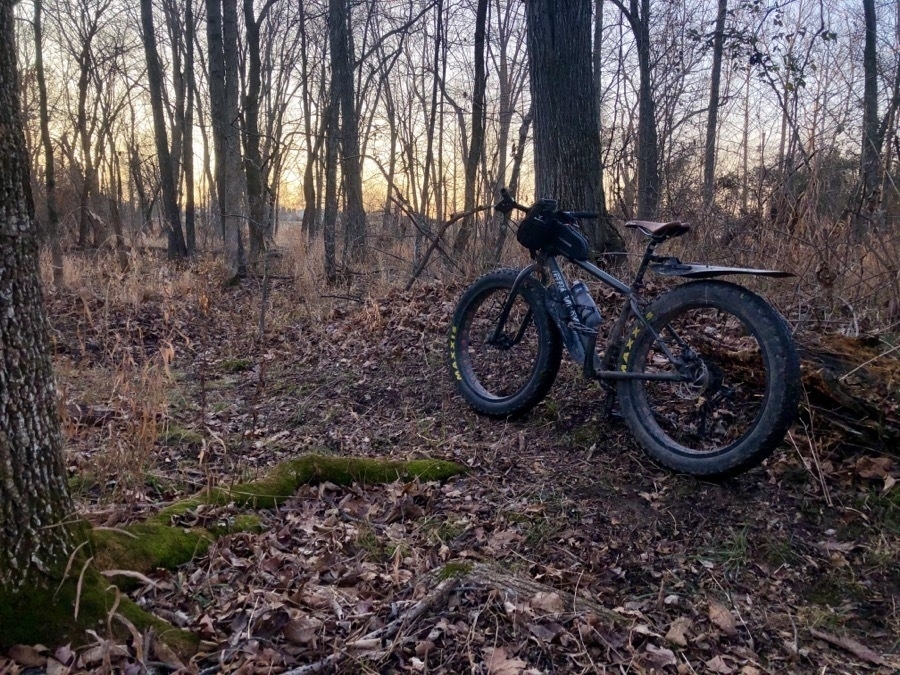 The bike in it’s current configuration with multiple water bottle cages, handlebar attached bags, fenders and upgraded seat.[/caption]
The bike in it’s current configuration with multiple water bottle cages, handlebar attached bags, fenders and upgraded seat.[/caption]
As I said at the end of my initial review, I’d have no problem recommending this bike to anyone considering a fat bike. It’s on the heavier side with mid-level components but at 38 lbs it’s still a fairly light and easy ride on the trails. The GBEM sells for $500 to $600 and compares fairly well to bike store brands (Giant, Trek, Specialized, Salsa, Surly)which generally start around $1,500 and weigh in at around 33lbs. I’m working on a future post to compare these two general choices because it’s worth considering before purchasing a bike. That said, I’ll continue to ride my fat bike with no regrets.
2020 - My return to peddling
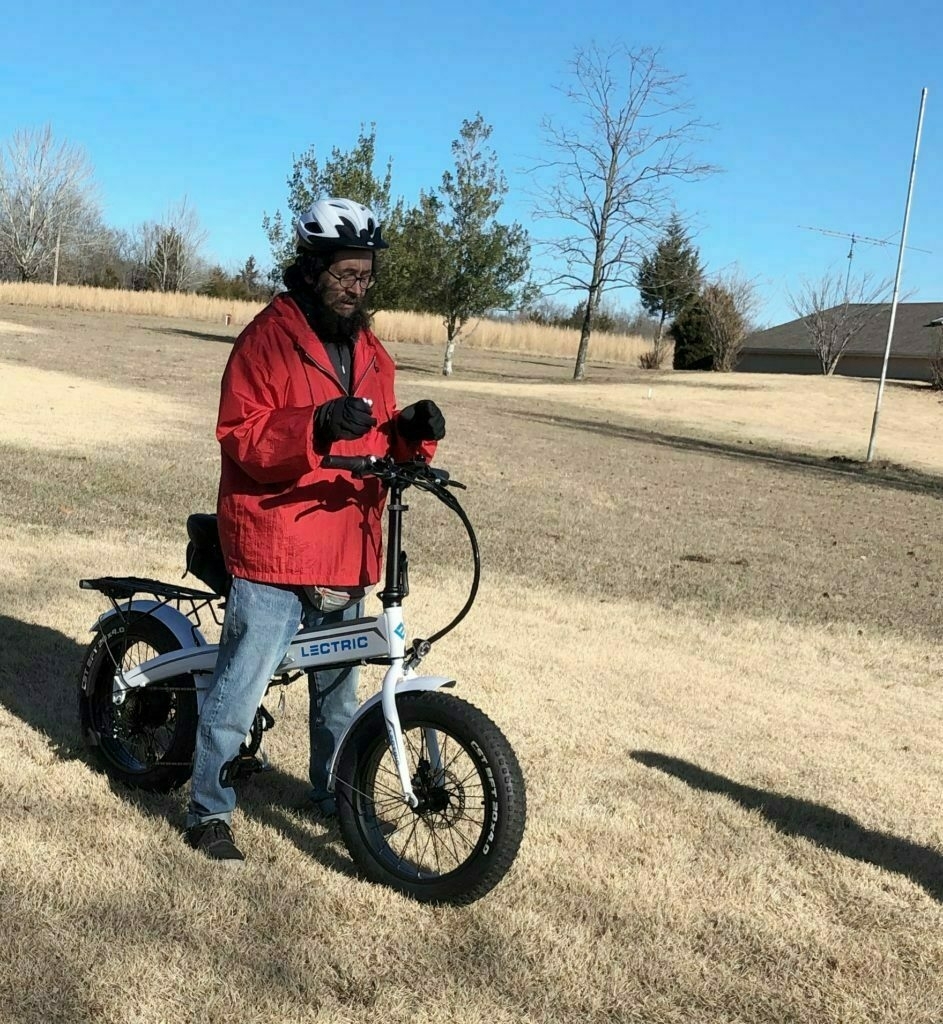 December 21, 2019 - First ride on the XP!
December 21, 2019 - First ride on the XP!
A year ago today I got my first bike in 20 years, an electric folding bike, the LectricXP. I’d sold my last two bikes 20 years ago after an aggravated knee injury that didn’t seem to get better. Over the years I would occasionally try a bike ride on a borrowed bike but the discomfort was there every time. When I bought the LectricXP last winter I expected to just use it to ride a mile to visit my folks and check the mail when I wanted something faster than my usual walk. I had no idea that I’d be able to consistently pedal again. The day of this photo I ended up riding a 12 mile round trip to town. The bike did most of the work as I didn’t yet have the confidence that my knee would hold up to much effort. Over the weeks I put in more of the effort and was riding farther, as far as the battery would safely last.
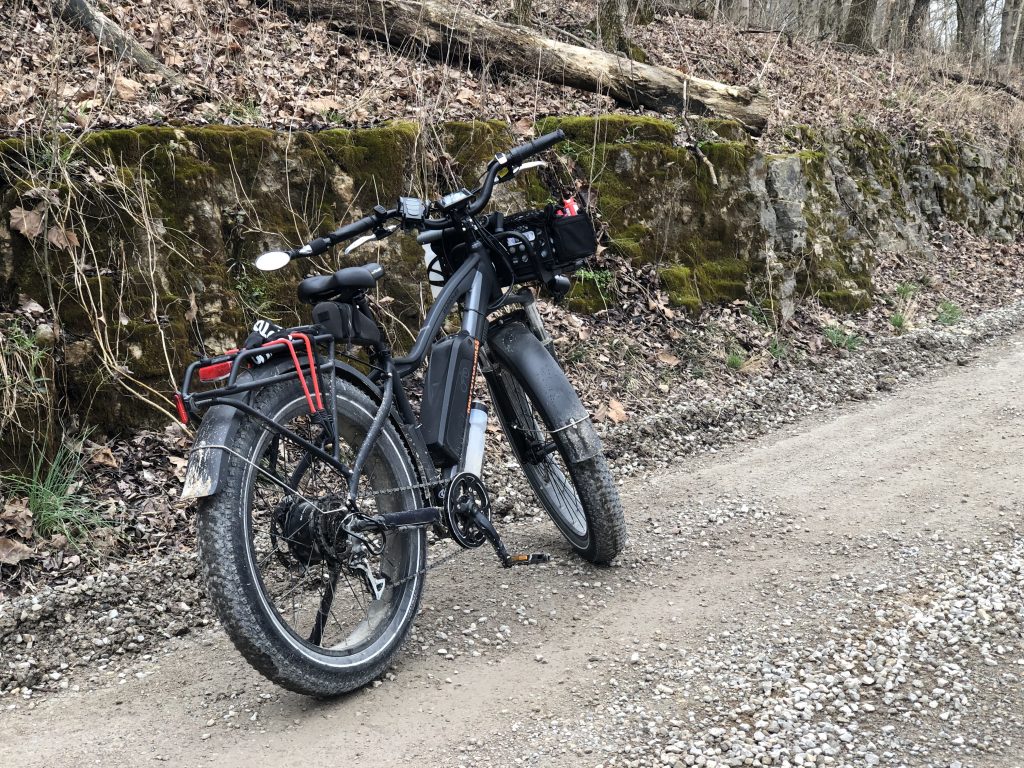 The Rad Rover in Perry County - a 40ish mile ride!
The Rad Rover in Perry County - a 40ish mile ride!
After a month I’d bought a second e-bike, the Rad Rover that had a larger range (45 miles instead of 35) and I was riding nearly every day up to 30 miles. Then 35 miles. Then 40 miles. By March I was trying to pedal as much of my 45 mile rides with little to no assist from the bike for as much of the ride as I could. I rode 800 miles on the Rover in March.
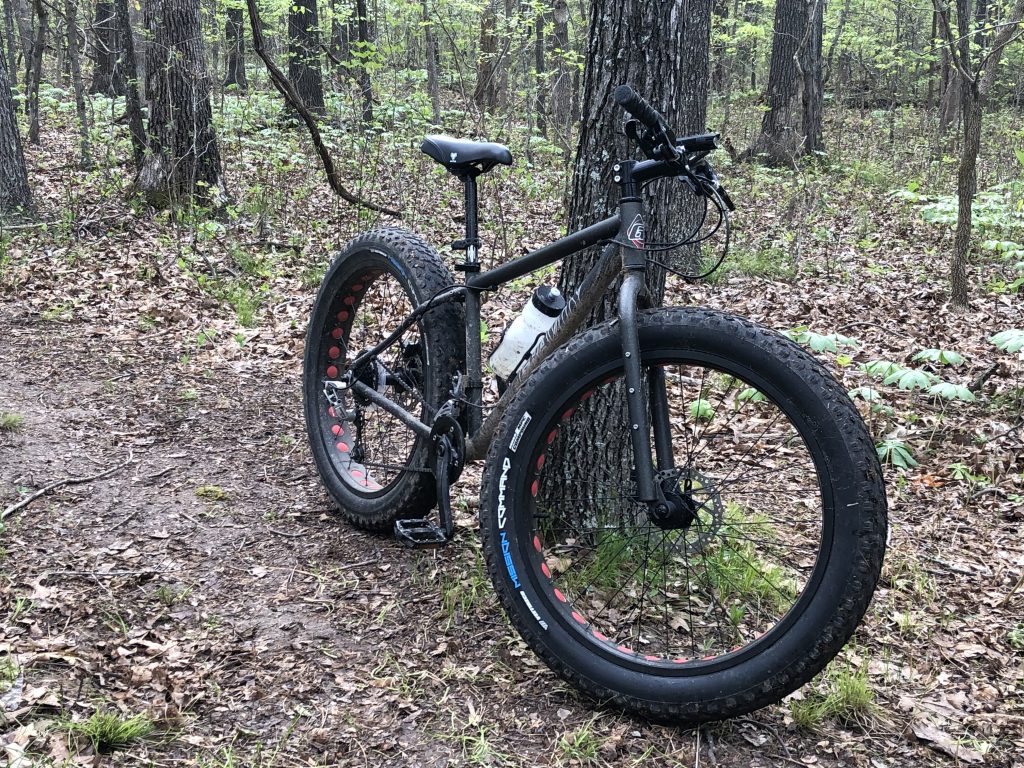 Non-Powered Gravity fat bike
Non-Powered Gravity fat bike
With the Covid virus getting worse my sister started working remotely and began a long-term visit in early April that would end up lasting through the summer. I decided to cut my long county rides short and focus on building some trails to ride closer at hand. As a result, in April I bought the non-powered Gravity Bullseye Monster fat bike. I wasn’t sure I’d be able to ride it unassisted but the Rover had allowed me to build up some confidence. A year ago the idea of riding a bike unassisted wasn’t a thought when I tapped the “buy” button on the Lectric webpage. 50 miles with no assist? I would have rolled on the ground laughing. Or that I would be riding nearly every day week after week? I’m feeling a lot of gratitude for the folks at Lectric and Rad Power Bikes as they got me back peddling on my own again. And for anyone thinking of an electric bike, go for it! That said, if you are healthy enough to pedal on your own, keep at it as much as you are able. There’s no technology better than a bike that I can think of that has made me a happier, healthier person in the course of my life.
It seems weird that in this terrible, bizzaro nightmare of a year I have had perhaps the best year of my previous 20 years thanks to these bikes and the socially distanced life I’ve been living for most of the past 12 years. As the pandemic, social struggles, and related nightmares raged on I’ve been out in the quiet countryside peddling along blissfully. It’s a strange disconnect. Regardless, I’m thankful that my year has been a healthy one.
Fat bike fitting: fixing a wide stance
Alternate post title… Fat Bike, I just can’t quit you!
Alternate alternate post title: I think I fixed my knee discomfort caused by the wide Q-factor of the fatbike!
A couple weeks ago I posted about using the Poseidon X as a trail bike. An update: After a week or two of riding the trails we had several days of rain and hoo-boy does it get tricky on wet, muddy trails. Still, it’s doable and I did it for a couple days. But muddy trails in the cold of winter freeze, re-thaw, freeze and overall don’t tend to dry out. So, while I don’t mind the challenge, the prospect of riding consistently wet, muddy trails for weeks at a time, likely doing damage to the trail that I would have to fix, led me back to the fat bike.
To reiterate, I love the fat bike. It’s a blast to ride and the only reason I was avoiding it was knee discomfort due to the wider stance. So, I made a few more seat adjustments and, I think crucially, decided to try riding with my feet positioned all the way up against the crank. I think the general norm is that you place your foot squarely on the pedal. It occurred to me that if I pulled my feet up closer to, and in contact with the crank arm, I’d be that much closer to the more comfortable riding position I needed for my knees. The Poseidon X has my foot at about 3 1/8” (80mm) away from the seat tube. By comparison, the inside of the pedal on the fat bike is 4” (102mm) away from the seat tube. Putting my feet up against the crank arm has my foot at about 3 1/2” (89mm) away from the seat tube. It’s only a half inch difference but this adjustment seems to have done the trick! That’s the funny thing about bike fitting. Often times it’s just an adjustment of a half inch or an inch, be it seat height, stem length or angle, etc that can make a big difference. This is especially true if you’re doing longer hours on the bike. 30 minutes here and there likely won’t matter much. But 2 to 3 to 4 hours a day, several days a week, well, that’s makes a difference.
It may also be possible to find some different cranks with less of an outward bend and I may look into cranks that are closer to the frame. For now this adjustment to my foot-on-pedal position seems to have done the trick. It’s been about 10 days of riding and the issue has not returned. So happy to be back on this bike!
